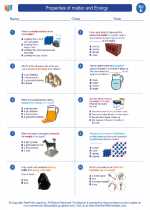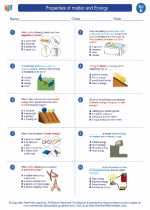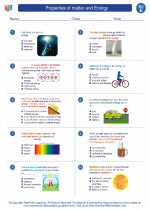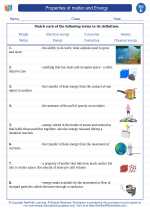Properties of matter and Energy -> solar system
Solar System
The solar system is a collection of celestial bodies, including the sun, planets, moons, asteroids, comets, and other objects that orbit the sun. The sun is at the center of the solar system, and all the other objects orbit around it due to its gravitational pull.
Sun
The sun is a massive, luminous sphere of hot plasma that is the star at the center of the solar system. It provides light and heat to the planets and other objects in the solar system.
Planets
There are eight planets in the solar system, divided into two groups: terrestrial planets (Mercury, Venus, Earth, and Mars) and gas giants (Jupiter, Saturn, Uranus, and Neptune). The planets vary in size, composition, and distance from the sun.
Moons
Many of the planets in the solar system have moons or natural satellites that orbit around them. For example, Earth has one moon, while Jupiter has over 70 moons.
Asteroids and Comets
Asteroids are small, rocky objects that orbit the sun, mostly found in the asteroid belt between Mars and Jupiter. Comets are icy bodies that also orbit the sun, and they are known for their bright, glowing tails when they approach the sun.
Study Guide
Here are some key points to remember for the solar system:
- The sun is at the center of the solar system.
- There are eight planets in the solar system, divided into terrestrial and gas giants.
- Planets have moons or natural satellites that orbit around them.
- Asteroids and comets are also part of the solar system.
[Solar System] Related Worksheets and Study Guides:
.◂Science Worksheets and Study Guides Fifth Grade. Properties of matter and Energy

 Worksheet/Answer key
Worksheet/Answer key
 Worksheet/Answer key
Worksheet/Answer key
 Worksheet/Answer key
Worksheet/Answer key
 Vocabulary/Answer key
Vocabulary/Answer key
 Vocabulary/Answer key
Vocabulary/Answer key
